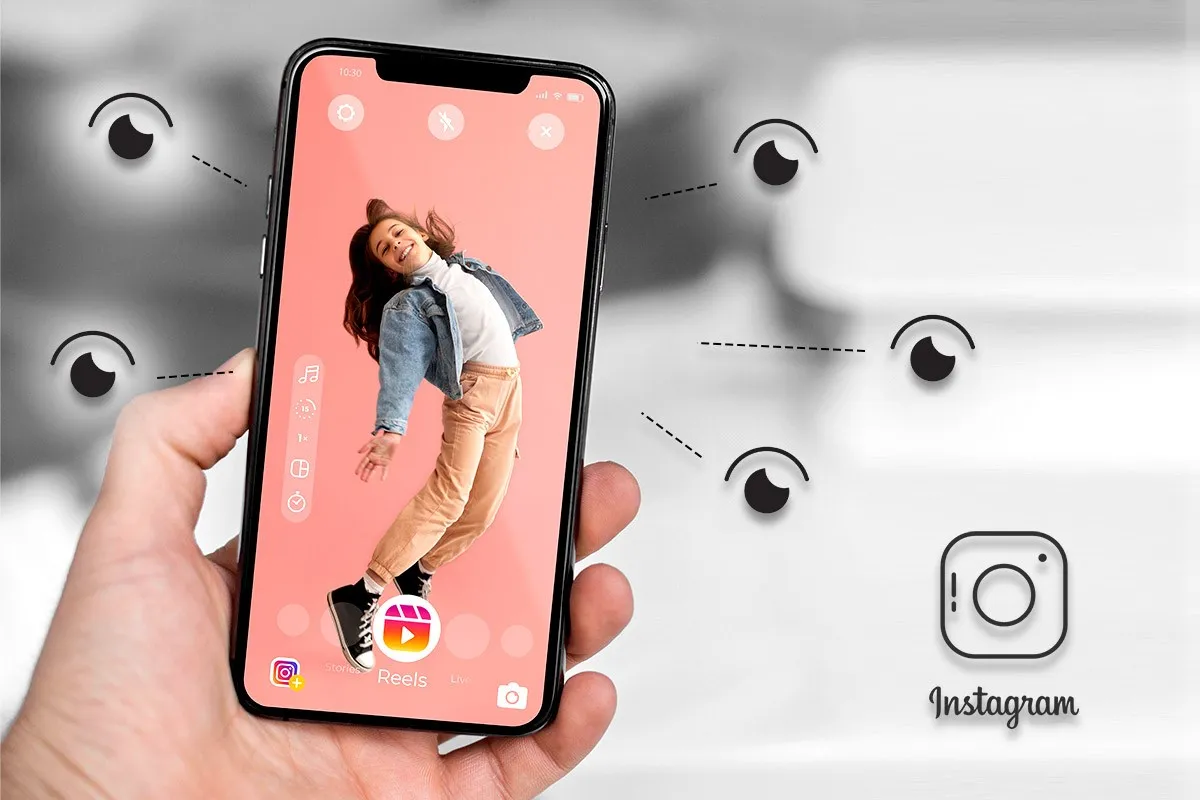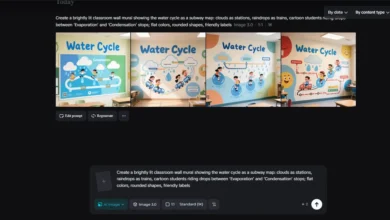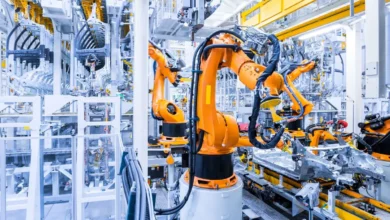
In today’s digital landscape, creating professional-quality images has become a critical necessity for content creators, marketers, and businesses alike. Yet, many find themselves struggling with complex design software, limited budgets for professional photographers, or a lack of technical expertise. Enter AI image generators – revolutionary tools that are transforming how we create visual content.
These innovative solutions combine cutting-edge artificial intelligence with user-friendly interfaces to democratize professional image creation. Platforms like Kling AI exemplify this evolution, offering the perfect balance of sophistication and simplicity, enabling you to produce stunning visuals in minutes rather than hours.
By leveraging advanced machine learning algorithms, these tools not only save time and resources but also unlock unprecedented creative possibilities, allowing anyone to bring their visual ideas to life with professional polish. Let’s explore how these game-changing tools are revolutionizing the way we approach image creation.
The AI Revolution in Image Creation: Why It Matters Now
The landscape of visual content creation has undergone a dramatic transformation in recent years. Traditional design software, while powerful, often requires extensive training and significant time investment to master. Today’s AI-powered image generation tools represent a fundamental shift in how we approach visual content creation.
Recent studies show that posts with images receive 352% more engagement on LinkedIn and 230% more engagement on Facebook, highlighting the critical importance of high-quality visuals in digital communication.
AI tools are revolutionizing this space by offering unprecedented speed – reducing image creation time from hours to minutes – while simultaneously cutting costs by eliminating the need for expensive software licenses or professional photographers.
These tools have effectively democratized design by removing technical barriers, allowing anyone with a creative vision to produce professional-quality images. Real-world success stories abound, from small businesses creating stunning social media campaigns to content creators developing unique book covers and marketing materials, all achieved through AI image generation.
This technological leap forward isn’t just about convenience; it’s fundamentally changing who can participate in professional image creation and how quickly they can bring their ideas to life.
Essential Features of Top-Tier AI Image Creation Tools
Intuitive Interface Design Principles
Modern AI image creation tools prioritize user experience through thoughtfully designed interfaces that eliminate complexity. These platforms feature clean, organized layouts with clearly labeled tools and functions that guide users naturally through the creation process.
Essential elements include customizable workspaces that adapt to individual workflows, smart contextual menus that present relevant options based on current tasks, and instant tooltips that guide without overwhelming users.
The drag-and-drop functionality allows for effortless image manipulation, while extensive template libraries offer professional starting points for various projects, from social media posts to marketing materials. Real-time preview capabilities enable users to see changes instantly, fostering confident decision-making and creative exploration.
Advanced Multi-Image Handling Capabilities
Professional AI tools excel in managing multiple images simultaneously, streamlining complex visual projects. Users can efficiently upload entire image collections through intuitive batch processing systems, maintaining organized libraries with smart tagging and categorization.
Advanced layering mechanisms enable sophisticated composition creation, allowing users to combine elements from various sources while maintaining professional quality. Style transfer technology ensures visual consistency across images, particularly valuable for brand identity maintenance.
The platforms offer intelligent blending algorithms that seamlessly merge multiple references, creating cohesive final outputs that maintain the desired aesthetic across all marketing channels.
AI Technology Behind Stunning Visuals
At the core of these tools lies sophisticated neural network architecture that analyzes and processes images with remarkable precision. These systems employ advanced upscaling algorithms to enhance resolution without quality loss, while style adaptation networks ensure consistent visual themes across generated images.
The technology supports multiple output formats, from web-optimized JPEGs to print-ready TIFFs, ensuring versatility for any use case. Machine learning models continuously improve output quality through user feedback, resulting in increasingly refined and professional results.
Your Step-by-Step Guide to Generating Professional Images
Step 1: Setting Up Your Creative Workspace
Begin by selecting a username that reflects your professional identity and enable two-factor authentication for account security. Navigate through the dashboard’s key sections: project folders, template library, and resource management.
Create dedicated project folders with clear naming conventions and establish a systematic approach to organizing your reference materials, custom presets, and generated outputs. Familiarize yourself with the quick-access toolbar containing essential tools for immediate creative work.
Step 2: Mastering Reference Image Uploads
Ensure your reference images meet the optimal specifications: JPG, PNG, or WEBP formats under 20MB, with minimum dimensions of 512×512 pixels. Utilize the bulk upload feature by dragging multiple files simultaneously or selecting entire folders.
Implement a strategic tagging system using descriptive keywords, style indicators, and project references. Create separate collections for different projects or themes.
Remember to review privacy settings for sensitive materials and enable content filtering when necessary. Consider using the auto-backup feature to preserve your reference library securely in the cloud.
Step 3: Manipulating Visual Elements
Leverage AI-powered composition tools to enhance image layouts through intelligent cropping and reframing suggestions. Use the smart color harmony feature to automatically synchronize color schemes across multiple images while maintaining brand consistency.
Take advantage of the content-aware removal tool to eliminate unwanted elements without leaving artifacts. Apply style transfer capabilities to maintain visual consistency across different images, adjusting parameters like intensity and detail preservation for optimal results.
Experiment with the AI-driven perspective correction and lighting adjustment tools to achieve professional polish.
Step 4: Generating and Refining Output
Craft detailed prompts using specific descriptors, artistic styles, and technical parameters to achieve desired results. Utilize the variation generator to explore multiple iterations quickly. Fine-tune outputs using the quality enhancement slider, adjusting parameters like sharpness, noise reduction, and color accuracy.
Choose appropriate export settings based on your intended use, whether it’s web optimization, print preparation, or social media formatting. Save successful prompt combinations as custom presets for future use.
Maximizing AI Tools for Content Creation Workflows
AI image generation tools are revolutionizing content creation workflows across multiple channels. For social media, creators can now rapidly produce platform-specific visuals by leveraging smart templates that automatically adjust to different aspect ratios while maintaining brand consistency.
Blog posts gain enhanced engagement through AI-generated hero images and in-line visuals that perfectly match the content’s tone and message. Marketing teams are streamlining their collateral production by creating variations of core brand assets for different campaigns and audiences, reducing design bottlenecks significantly.
The key to successful implementation lies in establishing clear visual guidelines within the AI tool’s parameters, then creating reusable presets that ensure consistency across all outputs. Teams can further optimize their workflow by integrating these tools with content management systems through APIs, enabling automated image generation triggered by content updates.
Advanced users are implementing personalization at scale by using dynamic variables in their prompts to generate customized visuals for different audience segments. Regular audits of generated content help refine prompt libraries and style presets, continuously improving output quality while maintaining efficiency in the creative process.
Embracing the Future of Visual Content Creation
The emergence of AI image generators marks a transformative shift in visual content creation, making professional-quality imagery accessible to everyone. These powerful tools have effectively bridged the gap between technical complexity and creative vision, enabling content creators, marketers, and businesses to produce stunning visuals without extensive design expertise.
Through intuitive interfaces, advanced AI capabilities, and streamlined workflows, these platforms have revolutionized how we approach visual content development. The combination of sophisticated neural networks, user-friendly features, and practical workflow integration options has created unprecedented opportunities for creative expression and brand storytelling.
As AI technology continues to evolve, we can expect even more innovative features and capabilities that will further enhance the quality and efficiency of image generation. Now is the time to embrace these tools and integrate them into your content creation strategy.
By mastering AI image generators, you’ll not only save time and resources but also unlock new possibilities for visual storytelling that were previously out of reach. Take the first step today by exploring these platforms and experiencing firsthand how they can transform your approach to professional image creation.

















